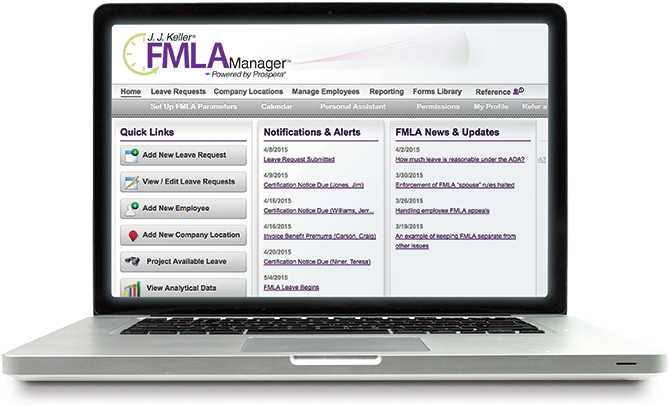Steps to conducting an internal FMLA audit
The FMLA is a complicated law, made even more challenging because it deals with personal situations. If you’ve experienced some FMLA trials and tribulations, perhaps an internal self audit could help shore up your practices and eliminate or reduce some issues and reduce the risk of a claim.
The FMLA isn’t going away any time soon, and the increase in state leave programs can lend a bit of urgency to ensuring that your policies and practices are tight and effective. Some steps you might consider in an internal FMLA audit can include the following:
- Review any related policies to ensure they reflect the latest regulations as well as practices.
- Ensure the latest FMLA poster is provided where employees and applicants can see it.
- Review the procedures managers and supervisors use when an employee reports an absence that could be covered by the FMLA. Ensure they are asking the right questions of employees to help determine whether the FMLA applies.
- Track the process leave requests have taken and determine if they all timely reached the appropriate leave administrator, even if an employee did not use the term “FMLA.”
- Consider whether the chosen 12-month leave year period still fits your company and its goals.
- Look at how you calculate increments of intermittent leave to ensure you are not mandating too much leave.
- Review certification processes to ensure you are not being too aggressive, and that you are allowing an employee to cure an incomplete or insufficient certification.
- Ensure you are directly contacting a health care provider only after you receive a complete and sufficient certification, and only to obtain clarification or authentication.
- Review past leave records to ensure that employees timely received an eligibility/rights & responsibilities notice and a designation notice.
- Determine whether you have sought recertification only as allowed and you have not been too aggressive.
- Review your policy and past practices on contacting employees while on FMLA leave to ensure it does not go too far and considers the particular situation.
- Review what steps were taken to help curb real or potential abuse.
- Ensure your requests for fitness-for-duty certifications comply with the regulations.
- Ensure that your FMLA records are complete, accurate, and maintained appropriately, including confidential information. The information includes employee identification; payroll data; date(s) of FMLA leave taken; FMLA leave hours/days/weeks taken; copies of employer and employee FMLA notices, certification forms, and related benefit documents; and any disputes regarding leave.
A step that should receive ample focus is training (or retraining) managers and supervisors, particularly if it’s been a while. The training should include information on the prohibition of retaliation and recognizing a notice of the need for leave. Supervisors and managers are often where the FMLA process weak links lie, as many courts have shown.
This article was written by Darlene M. Clabault, SHRM-CP, PHR, CLMS, of J. J. Keller & Associates, Inc. The content of these news items, in whole or in part, MAY NOT be copied into any other uses without consulting the originator of the content.
You may also enjoy the following articles:

The J. J. Keller FMLA Manager service is your business resource for tracking employee leave and ensuring compliance with the latest Federal and State FMLA requirements.